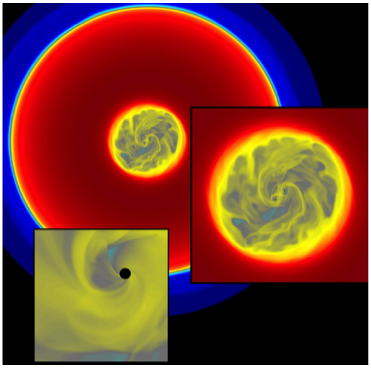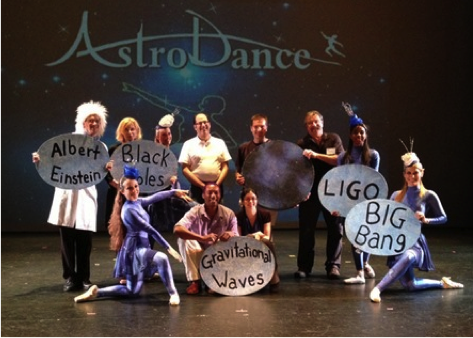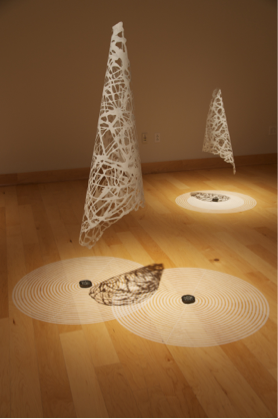

Abstract: The observation of supermassive black holes on the verge of merger has numerous exciting consequences for our understanding of galactic evolution, black hole demographics, plasmas in strong-field gravity, and general relativity. Near black holes not only gravity is so extreme to generate observable gravitational waves, but accretion of magnetized, relativistic gas can lead to very powerful observable electromagnetic signals that astronomers are searching for. The collision of supermassive black holes is so powerful tat it is also believed to be responsible of the launching of powerful jets across the universe.
The mathematics involved in simulating these events is very sophisticated because one has to solve the equations of Einstein’s general relativity and magneto-hydrodynamics all together. The problem also requires very advanced supercomputers running programs on tens of thousands of CPUs simultaneously, and the use of sophisticated techniques for data extraction and visualization. Petascale numerical simulation is therefore the only tool available to accurately model these systems. Fortunately, thanks to new developments in the field of numerical relativity, we can now simulate and visualize the innermost workings of these violent astrophysical phenomena.
The Blue Waters system at the National Center for Supercomputing Applications and the University of Illinois is the ideal resource to carry out such calculations because of its immense size (number of cores, available storage, and very large allocations compared to XSEDE). Our computational toolkit scales well to tens of thousands of cores, and has been already adapted with a load balancing to run efficiently on the Blue Waters system.
In this presentation, I will review the research efforts to solve this problem from a multi-institutional global perspective.
At the end of this presentation, I will also introduce some unique outreach efforts, such as Astrodance which aims at communicating the science and computational aspects of this project through 3D visualizations and dance performances bringing together the joint experiences and talents of a very interdisciplinary team of scientists, artists, educators and students. Another ongoing collaboration with artists at RIT, MIT and Harvard produced a national exhibits at the Headquarters of the American Physical Society and at the National Academy of Sciences in Washington, DC.



Bio: Dr. Campanelli is a professor of Mathematics and Astrophysics at the Rochester Institute of Technology. She is the director of the Center for Computational Relativity and Gravitation. Campanelli was the recipient of the Marie Curie Fellowship (1998), the American Physical Society Fellowship (2009) and the RIT Trustee Award (2014). She was also the Chair of the APS Topical Group in Gravitation in 2013.
Dr. Campanelli has an extensive research experience on Einstein’s theory of General Relativity, astrophysics of black holes and gravitational waves. She is known for groundbreaking work on numerical simulations of binary black hole space times and for explorations of physical effects such as “super kicks” and spin-driven orbital dynamics. In 2005, she was the lead author of a work that produced a breakthrough on binary black hole simulations. In 2007, she discovered that supermassive black holes can be ejected from most galaxies at speeds of up to 4000km/s. Her more current research focuses on computer simulations of merging supermassive black holes, and on magnetohydrodynamics simulations of their accretion disk and jet dynamics, in connection with both gravitational-wave and electromagnetic observations. Dr. Campanelli’s research include numerous publications and invited presentations and reviews papers. Her was highlighted by the American Physical Society’s Focus, New Scientist, Astronomy, and the Laser Interferometer Gravitational-Wave Observatory’s LIGO Magazine. More info can be found at: http://ccrg.rit.edu/people/campanelli